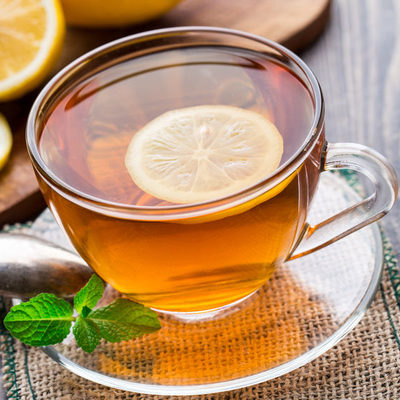
Tea
What is Tea?
Tea is a beverage that is prepared by boiling tea leaves in hot water. Sometimes milk and sugar are added to it. It is the most heavily consumed beverage in the world after water. Different kinds have different tastes and is considered a stimulant as it contains caffeine. It requires loose and deep soil and is grown best at high altitudes and sub-tropical climates. There are different types, such as:
- Black Tea 4. White Tea
- Green Tea 5. Puer Tea
- Oolong 6. Dark Tea
All these types come from the same plant, camellia sinensis, and are processed differently. Technically, other types such as fruit teas, rooibos, chamomile are not really teas.
Origin
This drink originally came from China. A popular legend says that Emperor Shen Nung was drinking boiled water when a few leaves blew into his drink. However, it is now believed that drinking this originated in southwest China and that the Han emperors drank this as early as 2nd century BC. It has often been used as a medicine throughout the ages.
Outside of China, Japan was the first country to adopt drinking teas in 6th century. This spread to other Southeast Asian countries such as Korea and Vietnam. Marco Polo and other European travelers to Asia began to record about it from the 12th century onwards. It first entered Europe in the 17th century.
The first use of tea leaves in India was recorded in 1662, probably brought to western India by Chinese traders. Production gained traction in India in the 1820s when the British colonizers started to set up large scale plantations. Britain started plantations in other colonies such as Sri Lanka, Kenya, Mauritius, South Africa, etc.
Today, India and China together produce more than 60% of the world’s teas. The world consumes around 6 million tons per year.
Nutrition
There are several reasons why this is a great drink to have on cold afternoons or busy mornings.
- It is known to help fight cancer due to its high level of antioxidants from polyphenols. Evidence suggests that incidence of certain types of cancer is lower among drinkers. The antioxidants also help in combating gum disease.
- This drink can keep the teeth strong and healthy because of the fluoride content present in it.
- It contains flavonoids which can keep the heart healthy by lowering bad cholesterol. These flavonoids also keep blood pressure in check and boost immunity. They also help in combating inflammation.
- And the main reason we drink this is that it has caffeine, which heightens mental alertness.
However, despite its many positive effects, especially the highly processed black and dark teas, it must be taken in moderation. Over consumption of caffeine can lead to insomnia, diarrhea, tremors, heartburn, dizziness, etc. Excessive intake of green teas can also lead to periodontitis. Two or three cups a day is the ideal amount.
Tea recipes
This drink is versatile and can be produced and made in different ways. It can also be used to make certain dishes. Here are a few recipes:
FDA regulations
The FDA has standards and specifications for the tea bags or infusers, which must be adhered to. The USDA covers other aspects of production, import and packaging. It describes black teas as fully fermented, dry teas and specifies different labels for different sizes of black teas but selling tea dust is not allowed. The USDA also governs instant mixes, including green teas, flavored black teas, decaffeinated, etc. However, all processing must be done in accordance with the sanitary and safety requirements of the FDA.
References
“Tea” Encyclopedia of Products & Industries – Manufacturing. Encyclopedia.com. 23 May. 2020
https://www.encyclopedia.com/plants-and-animals/plants/plants/tea
Agnieszka Kosińska, Wilfried Andlauer, in Processing and Impact on Antioxidants in Beverages, 2014
https://sciencedirect.com/science/article/pii/B978012404738900012X
Penn Medicine, 2019
https://www.pennmedicine.org/updates/blogs/health-and-wellness/2019/december/health-benefits-of-tea
